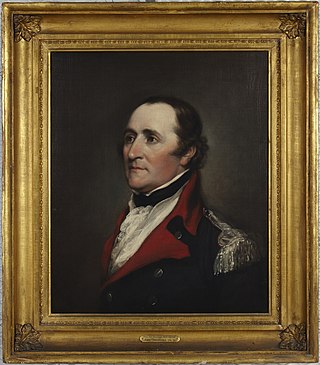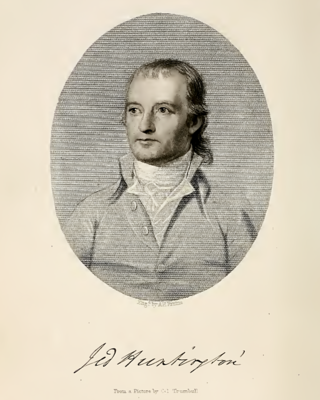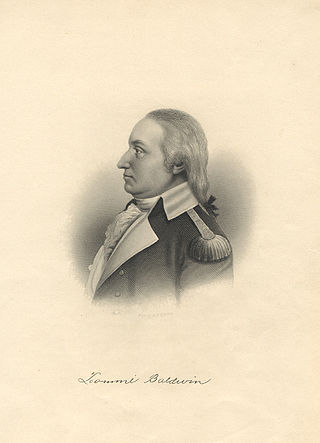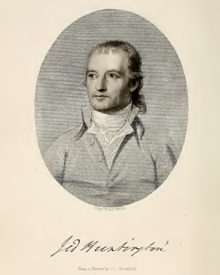The 3rd New Hampshire Regiment, also known as the 2nd Continental Regiment, was authorized on 22 May 1775, organized 1–8 June 1775, and adopted into the Continental Army on 14 June 1775, as the third of three regiments raised by the state of New Hampshire during the American Revolution. The enlistment dates for officers and rank and file soldiers extended to 23 April 1775, based on their response to the alarm for the Battles of Lexington and Concord.

The 2nd New Hampshire Regiment was formed in early May 1775, as the second of three Continental Army regiments raised by the state of New Hampshire during the American Revolutionary War. Its first commander was Colonel Enoch Poor, with Joseph Cilley as major. Many of the men who served in the unit hailed from southeastern New Hampshire and western Maine. During the first part of its service, the regiment took part in the siege of Boston, and there is a link below in the reference section to the orderly book of an officer in the unit during that time.

The 1st Rhode Island Regiment was a regiment in the Continental Army raised in Rhode Island during the American Revolutionary War (1775–83). It was one of the few units in the Continental Army to serve through the entire war, from the siege of Boston to the disbanding of the Continental Army on November 3, 1783.

The 2nd Rhode Island Regiment was authorized on 6 May 1775 under Colonel Daniel Hitchcock in the Rhode Island Army of Observation and was organized on 8 May 1775 as eight companies of volunteers from Providence County of the colony of Rhode Island. As part of a brigade organized under Nathanael Greene, the unit participated in the Siege of Boston during the remainder of 1775. Some elements accompanied Benedict Arnold's expedition to Quebec late in the year. The unit was renamed the 11th Continental Regiment on the first day of 1776.
The 6th Connecticut Regiment was raised on May 1, 1775, at New Haven, Connecticut, as a provincial regiment for the Continental Army. It then became a regiment of the Continental Line on January 1, 1776, designated the 10th Continental Regiment, and a regiment of the Connecticut Line on January 1, 1777, again designated the 6th Connecticut. The regiment saw action at the siege of Boston, the Battle of Long Island, the New York Campaign, and its colonel and company of light infantry served in the Corps of Light Infantry at the Battle of Stony Point. The regiment was merged into the 1st Connecticut Regiment on January 1, 1783, at West Point, New York, and disbanded on November 16, 1783.

The Connecticut Line was a formation within the Continental Army. The term "Connecticut Line" referred to the quota of numbered infantry regiments assigned to Connecticut at various times by the Continental Congress, the size of its allocation determined by the size of its population relative to that of other states. These, together with similarly apportioned contingents from the other twelve states, formed the Continental Line. The concept was particularly important in relation to the promotion of commissioned officers. Officers of the Continental Army below the rank of brigadier general were ordinarily ineligible for promotion except in the line of their own state.

The Massachusetts Line was those units within the Continental Army that were assigned to Massachusetts at various times by the Continental Congress during the American Revolutionary War. These, together with similar contingents from the other twelve states, formed the Continental Line. Line regiments were assigned to a particular state, which was then financially responsible for the maintenance of the regiment. The concept of the line was also particularly important in relation to the promotion of commissioned officers. Officers of the Continental Army below the rank of brigadier general were ordinarily ineligible for promotion except in the line of their own state.

The New Hampshire Line was a formation in the Continental Army. The term "New Hampshire Line" referred to the quota of numbered infantry regiments assigned to New Hampshire at various times by the Continental Congress. These, along with similar contingents from the other twelve states, formed the Continental Line. For the promotion of senior officials, this concept is particularly important. Officers of the Continental Army below the rank of brigadier general were ordinarily ineligible for promotion except in the line of their own state.

The Rhode Island Line was a formation within the Continental Army. The term "Rhode Island Line" referred to the quota of numbered infantry regiments assigned to Rhode Island at various times by the Continental Congress. These, together with similar contingents from the other twelve states, formed the Continental Line. The concept was particularly important in relation to the promotion of commissioned officers. Officers of the Continental Army below the rank of brigadier general were ordinarily ineligible for promotion except in the line of their own state.
The 1st Connecticut Regiment (1775) was raised on 27 April 1775 at Norwich, Connecticut in the Connecticut State Troops. The regiment consisted of ten companies of volunteers from New Haven and Litchfield counties of the state of Connecticut.

Ebenezer Huntington was an officer in the Continental Army during the American Revolutionary War, and afterwards United States Representative from Connecticut.
Benjamin Hinman was a surveyor, soldier and legislator.

Jedediah Huntington, was an American general in the Continental Army during the American Revolutionary War. After the war, he served in numerous civilian posts.

The 2nd Continental Artillery Regiment also known as Lamb's Continental Artillery Regiment was authorized on 1 January 1777 as Colonel John Lamb's Continental Artillery Regiment. As originally constituted, the regiment included 12 artillery companies from New York, Connecticut, and Pennsylvania. The bulk of the regiment served in the Hudson Highlands, though some companies fought with George Washington's main army from 1777 to 1779.

The 26th Continental Regiment was an infantry unit of the Massachusetts Line during the American Revolutionary War. Gerrish's Regiment was raised in the early days of the war, and the regiment underwent name changes as the Continental Army was reorganized in 1776 and 1777. From 1777 onward, the unit was known as the 9th Massachusetts Regiment.
Samuel Mattocks was a Connecticut and Vermont Continental Army officer and political figure who served as Vermont State Treasurer during the state's early years.
The 19th Connecticut Regiment was a military regiment in the American Revolutionary War. It was formed in 1774 by an act of the Connecticut General Assembly and was authorized 11 companies of volunteers from Enfield, East Windsor, Bolton, and the part of Hartford on the East side of the Connecticut river of Hartford County, Connecticut. The rolls of eight of those companies survive. While General George Washington was reorganizing the Continental Army from December 1775 through February 1776, during the Siege of Boston, Connecticut sent three regiments under Colonels James Wadsworth, Erastus Wolcott, and John Douglass. These regiments reached Boston in late January 1776 and remained for approximately six weeks.








